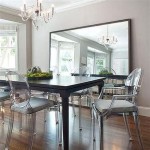Making Your Own Vanity Mirror With Lights
A well-lit vanity mirror is a staple for any makeup enthusiast or anyone who appreciates a polished look. While purchasing a ready-made lighted vanity mirror is an option, creating a custom DIY version offers distinct advantages. A DIY project allows for personalized sizing, style, and lighting choices to perfectly suit individual needs and existing decor. This article provides a comprehensive guide to constructing a personalized vanity mirror with lights.
Planning and Gathering Materials
Careful planning is crucial for a successful outcome. Begin by determining the desired mirror dimensions. Measure the space where the mirror will be placed to ensure a proper fit. Next, select the type of lighting. LED strip lights are a popular choice due to their energy efficiency, flexibility, and availability in various color temperatures. Consider the desired brightness and color temperature (warm white, cool white, or daylight) to achieve the preferred lighting effect. Once the mirror and lighting specifications are finalized, compile a list of necessary materials. This typically includes a mirror, LED strip lights, a power supply for the lights, wiring, a frame or mounting system, and tools such as a drill, screwdriver, and wire strippers.
Choosing the Right Mirror
The mirror itself forms the foundation of the project. A frameless mirror offers clean lines and versatility. The thickness of the mirror is a factor to consider, especially if it will be mounted. Standard mirror glass thickness ranges from 1/8 inch to 1/4 inch. Thicker glass offers greater durability but adds weight. When purchasing the mirror, ensure its edges are smoothly polished to prevent injury during handling and installation.
Selecting and Installing the LED Strip Lights
LED strip lights are available in various lengths, densities (LEDs per meter), and color options. Select a strip length that matches the perimeter of the mirror or the desired lighting area. Higher LED density provides more even illumination. Adhesive backing on most LED strips simplifies installation. Before attaching the strips, thoroughly clean the back perimeter of the mirror with isopropyl alcohol to ensure proper adhesion. Carefully peel back the protective layer on the adhesive backing and affix the LED strip to the mirror, applying even pressure along the length of the strip.
Wiring and Power Supply
Connecting the LED strip lights to a power supply requires basic wiring. Most LED strips operate on 12V or 24V DC. Choose a power supply that matches the voltage requirements of the LED strips and provides sufficient amperage to power the entire length of the strip. Follow the wiring instructions provided with the LED strip lights and power supply. This typically involves connecting positive and negative wires from the LED strip to the corresponding terminals on the power supply. Use wire connectors or soldering for secure connections. Ensure all connections are properly insulated to prevent short circuits.
Framing and Mounting
Framing the mirror adds a finished look and provides structural support. Wood, metal, or plastic frames can be used, depending on the desired aesthetic. The frame should be slightly larger than the mirror to accommodate the LED strips. Alternatively, the mirror can be mounted directly to a wall or vanity using appropriate hardware. If mounting directly, ensure the mounting system can support the weight of the mirror and the attached LED strips. Use suitable anchors and screws for secure installation.
Adding a Dimmer Switch (Optional)
A dimmer switch allows for adjustable brightness control, enhancing the functionality of the vanity mirror. In-line dimmer switches designed for LED strip lights can be incorporated into the wiring circuit. Follow the wiring instructions provided with the dimmer switch to connect it between the power supply and the LED strip lights. The dimmer switch can then be mounted on the frame or wall within easy reach.
Testing and Final Touches
Once the wiring and mounting are complete, test the lighting to ensure all connections are secure and the lights function correctly. Plug in the power supply and turn on the lights. Inspect for any flickering or dim areas. If a dimmer switch is installed, test its functionality. Finally, add any desired finishing touches. These might include decorative trim around the frame, or a coat of paint to match the surrounding décor.

Diy Vanity Mirror With Lights Under 150

Diy Light Up Vanity Mirrors You Can Make Ohmeohmy Blog

Diy Light Up Vanity Mirrors You Can Make Ohmeohmy Blog

Easy Diy Vanity Mirror Only 60

10 Diy Vanity Mirror Projects That Show You In A Diffe Light

Diy Vanity Mirror With Lights If A Is On Your Wishlist Then This Post For You Mak

Diy Make Up Mirror Vanity Makeup

Diy Vanity Mirror With Lights Only 40

Diy Light Up Vanity Mirrors You Can Make Ohmeohmy Blog

How To Make A Diy Makeup Vanity With Hollywood Lighted Mirror








